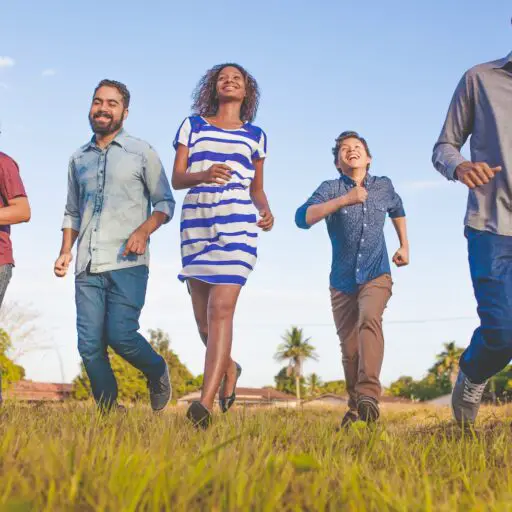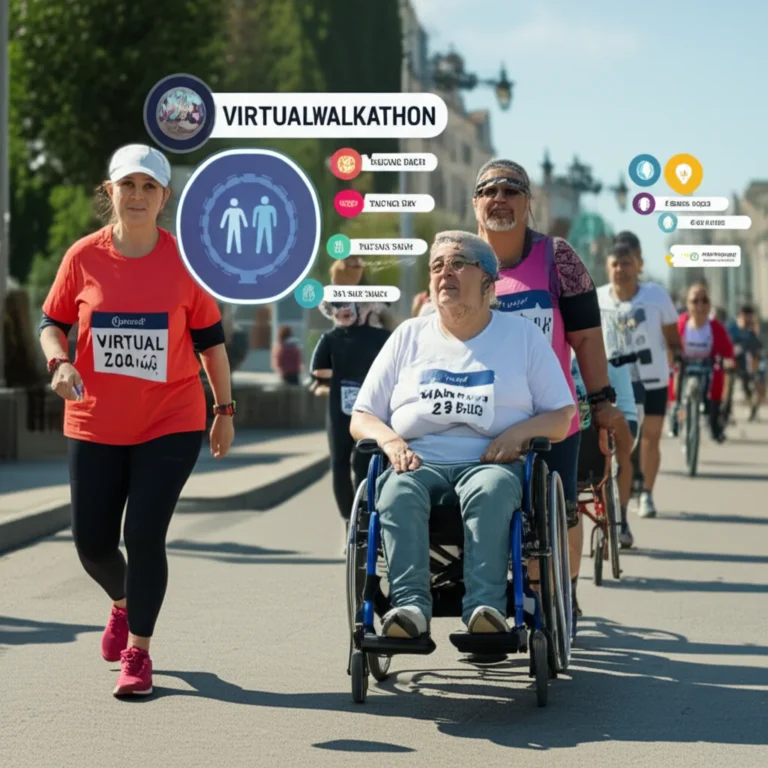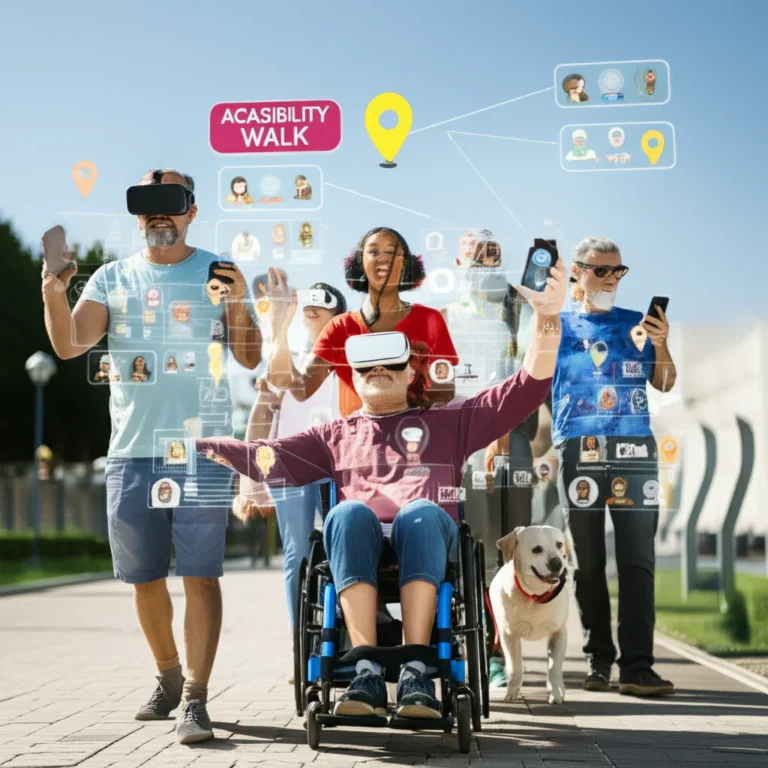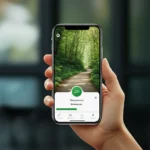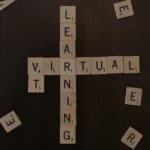Support our educational content for free when you purchase through links on our site. Learn more
7 Ways Virtual Walkathon Organizers Can Boost Accessibility in 2025 🚶♀️♿
Imagine rallying thousands of participants from around the world to walk, move, and fundraise—all from their own homes. Now imagine doing that while ensuring everyone can join in, regardless of ability. Sounds like a tall order? It’s actually within reach! Virtual walkathons have exploded in popularity, but the real challenge lies in making them truly inclusive and accessible for participants with disabilities.
Did you know that nearly 1 in 4 adults in the U.S. live with some form of disability? Yet, many virtual events still unintentionally exclude this vibrant community. In this article, we’ll walk you through 7 proven strategies to design, promote, and run virtual walkathons that welcome everyone. From choosing the right tech platforms to fostering an empathetic community spirit, we’ve got you covered. Plus, stay tuned for inspiring success stories and expert tips from the Walkathon Virtual™ team that will transform your event into a beacon of inclusion!
Key Takeaways
- Accessibility is a core design principle, not an afterthought. Build inclusivity into your event from the start.
- Choose virtual platforms and tools that support screen readers, captioning, and keyboard navigation.
- Offer adaptive participation options to accommodate diverse mobility and sensory needs.
- Train your team on disability awareness and foster an inclusive community culture.
- Partner with disability organizations and use accessible marketing to reach wider audiences.
- Budget for accessibility services like live captioning and sign language interpretation.
- Collect feedback from participants with disabilities to continuously improve future events.
👉 Shop accessibility tools and platforms:
- Virtual Event Platforms: Hopin | vFairs
- Captioning Services: Rev | Otter.ai
- Screen Readers: JAWS | NVDA
- Fitness Trackers & Apps: Strava | MyFitnessPal
Table of Contents
- ⚡️ Quick Tips and Facts
- The Evolution of Virtual Walkathons: A Journey Towards Universal Participation
- Why Inclusivity Isn’t Just Good PR, It’s Good Business!
- Understanding the Diverse Needs of Participants with Disabilities
- Designing Your Virtual Walkathon for Universal Access: The Tech & Platform Playbook 💻
- Beyond the Screen: Fostering an Inclusive Community Spirit 🤝
- Marketing and Outreach: Spreading the Word Inclusively 📣
- Legal & Ethical Considerations: Navigating the Accessibility Landscape ⚖️
- Feedback Loops and Continuous Improvement: Listening to Learn 👂
- Funding Accessibility Initiatives: Making It Happen 💰
- Success Stories and Inspiring Examples: When Inclusivity Shines ✨
- Conclusion: Walking Forward, Together!
- Recommended Links
- FAQ
- Reference Links
Here is the body of the blog post, written according to your specifications.
⚡️ Quick Tips and Facts
Ready to make your virtual walkathon a smashing success for everyone? We thought so! Before we dive deep, here are some quick-fire tips and eye-opening facts to get your mind jogging.
- Be Proactive, Not Reactive: Accessibility isn’t an add-on; it’s a core part of the design. As one comprehensive guide from the National Center on Health, Physical Activity and Disability (NCHPAD) states, “Accessibility should be embraced.” Build it in from the very beginning.
- Appoint an Accessibility Champion: Designate one person on your team to be the go-to for all things accessibility. This ensures nothing falls through the cracks.
- Communication is Key 🔑: Use clear, simple language in all your materials. Ensure your website and social media are accessible by using alt text for images and captions for videos. The ability to communicate effectively is a cornerstone of the Americans with Disabilities Act (ADA).
- Tech Matters: Choose virtual event platforms that are compatible with assistive technologies like screen readers. Test your website for keyboard-only navigation.
- Ask and You Shall Receive (Information!): Include a simple question in your registration form: “Do you require any accommodations to participate fully?” This opens the door for a respectful conversation. Remember, “the person with a disability is the best person to ask what type of service or aid will be most effective for them.”
- Budget for Access: Plan ahead for potential costs like live captioning services or sign language interpreters.
- Disability is More Common Than You Think: In 2021, a National Science Foundation report found that 9.4% of individuals with doctorates in science, engineering, or medicine aged 40 or over have a disability. Your audience is diverse, so your event should be too!
The Evolution of Virtual Walkathons: A Journey Towards Universal Participation
Remember the old days of fundraising? Bake sales with questionable brownies and physical walkathons that, while awesome, weren’t always an option for everyone. Fast forward to today, and the digital landscape has blown the doors wide open! Virtual walkathons have become a game-changer, allowing you to connect with supporters from all corners of the globe. This is a huge leap forward for our Global Walkathon Events.
But with great power comes great responsibility, right? The initial boom in virtual events was all about translating the in-person experience online. Now, we’re in a more thoughtful phase: the evolution towards true inclusivity. It’s no longer just about who can show up, but about how we can design an experience that actively welcomes and supports every single participant. The question, “Are virtual walkathons accessible to people with disabilities?“, is one we take very seriously. We’re moving from simply being open to all, to being built for all.
Why Inclusivity Isn’t Just Good PR, It’s Good Business!
Let’s be real. Creating an accessible event makes you look good. ✅ But the benefits run so much deeper than a simple pat on the back. When you prioritize inclusivity, you’re not just doing the right thing; you’re making a savvy strategic move.
Think about it:
- A Wider Audience: You instantly expand your potential participant pool. More participants can mean more donations and a bigger impact for your cause. This is one of the best Fundraising Ideas we can offer!
- Enhanced Brand Reputation: People want to support organizations that share their values. A genuine commitment to inclusivity builds trust and loyalty that money can’t buy.
- Richer Community Experience: Diversity of experience and perspective makes for a more vibrant and engaging community. When everyone feels welcome, the collective energy is unstoppable!
- Innovation Driver: Tackling accessibility challenges often forces you to find creative solutions that end up benefiting all your participants. Think curb cuts in sidewalks—designed for wheelchairs, but loved by parents with strollers, travelers with luggage, and kids on scooters. The same principle applies here!
Ultimately, the goal is to avoid what one expert calls “‘othering’ those with accessibility needs.” It’s about creating a seamless experience where everyone feels like they belong from the get-go.
Understanding the Diverse Needs of Participants with Disabilities
“Disability” isn’t a monolith. It’s a vast and varied spectrum of human experience. To create a truly inclusive event, we need to move beyond a one-size-fits-all approach and consider the specific barriers different individuals might face.
Mobility and Physical Impairments
This is often the first thing people think of, but it’s more than just wheelchair access. It includes individuals who use walkers or canes, have limited stamina, or experience chronic pain. For a virtual walkathon, the challenge isn’t navigating a physical course, but rather how participation is defined and tracked.
- Challenge: The very concept of a “walkathon” can feel exclusionary if it’s rigidly defined by steps or distance.
- Solution: Offer flexible tracking! Allow participants to log activity in minutes, convert other exercises (like swimming or seated yoga) into “steps,” or set personal goals that aren’t based on distance at all. We love apps like Strava or MyFitnessPal which can track various types of activities.
Visual Impairments
Participants who are blind or have low vision rely on non-visual means to access digital content.
- Challenge: A graphics-heavy website, an inaccessible app, or a video without description can be complete dead ends.
- Solution: This is where WCAG (Web Content Accessibility Guidelines) become your best friend. Ensure your website is compatible with screen readers (like JAWS or NVDA), use descriptive alt text for all images, and provide audio descriptions for video content.
Hearing Impairments
For participants who are Deaf or hard of hearing, any audio-only content is a barrier.
- Challenge: A pre-race hype video, a live-streamed opening ceremony, or a podcast-style update are useless without visual text.
- Solution: Caption everything! ✅ Pre-recorded videos should have accurate, closed captions. For live events, invest in a live captioning service (CART). Provide transcripts for any audio content. This also benefits non-native speakers and people watching in noisy environments!
Cognitive and Learning Disabilities
This broad category includes conditions like dyslexia, ADHD, and others that affect how people process information.
- Challenge: Complicated registration forms, cluttered web pages, or long, dense blocks of text can be overwhelming.
- Solution: Keep it simple! Use clear headings, short sentences, and bullet points. For slide presentations, a study on accessible conferences suggests using dark text on a light (but not pure white) background to reduce visual stress.
Neurodiversity and Sensory Sensitivities
Some individuals may be overstimulated by loud noises, flashing lights, or a chaotic online environment.
- Challenge: A virtual event platform with constant pop-ups, auto-playing videos, and a dozen different things happening at once can be incredibly stressful.
- Solution: Offer a clean, predictable interface. Give users control over their experience—let them disable notifications or auto-play features. If you have a virtual “social,” consider creating a designated “quiet room” for less overwhelming interaction.
Mental Health Considerations
The pressure to perform or be “on” can be a significant barrier for individuals dealing with anxiety, depression, or other mental health conditions.
- Challenge: Leaderboards that publicly rank everyone or intense social pressure can be demotivating and anxiety-inducing.
- Solution: Make leaderboards optional or allow participants to use pseudonyms. Focus the event’s messaging on personal achievement and collective goals rather than cutthroat competition. Emphasize the Health Benefits of Walkathons for both mind and body.
Designing Your Virtual Walkathon for Universal Access: The Tech & Platform Playbook 💻
So, you’re committed to inclusivity. Awesome! Now for the nuts and bolts. Your technology choices are the foundation of an accessible virtual event. A clunky, confusing, or downright impossible-to-use platform can stop a potential participant in their tracks.
Choosing Accessible Virtual Platforms
Not all virtual event platforms are created equal. Before you commit, do your homework! Look for a “VPAT” (Voluntary Product Accessibility Template) or an accessibility statement on their website.
- What to look for: Platforms that explicitly mention WCAG compliance, screen reader support, and keyboard navigability.
- Some platforms to investigate: While the landscape is always changing, platforms like Hopin and vFairs have put effort into their accessibility features. However, always test them yourself! Don’t just take their word for it.
Website and Registration Accessibility
Your website is your front door. Is it unlocked for everyone?
- Run a simple test: Can you navigate your entire registration process using only your keyboard’s “Tab” key? If you get stuck, you have a problem.
- Use clear labels: Ensure all form fields are clearly labeled. Instead of just a box, it should say “First Name,” “Email Address,” etc.
- Provide information: Your website is the perfect place to post your accessibility statement and provide contact info for your Accessibility Champion.
Captioning and Transcripts for All Content
We said it before, and we’ll say it again: caption everything.
- For pre-recorded video: YouTube’s automatic captions are a starting point, but they are often inaccurate. For a professional look, use a service like Rev or Otter.ai to generate accurate captions and transcripts.
- For live events: You’ll need a real-time solution. CART (Communication Access Realtime Translation) services provide a human stenographer for maximum accuracy.
Audio Descriptions and Alternative Text
If you can see it, describe it.
- Alternative Text (Alt Text): This is the text that a screen reader reads aloud in place of an image. Don’t just say “image.” Describe what’s in it! (e.g., “A smiling group of five diverse people in Walkathon Virtual t-shirts linking arms at a finish line.”).
- Audio Description: For videos, this is a separate audio track that describes key visual elements that aren’t apparent from the main audio (e.g., “The team captain now unfurls a large banner that says ‘We did it!'”).
Keyboard Navigation and Screen Reader Compatibility
This is non-negotiable. Many users with mobility or visual impairments rely on keyboards or screen readers. Your site and platform must work with these tools. Use online checkers like the WAVE Web Accessibility Evaluation Tool to get a quick report on your site’s accessibility.
Adjustable Speeds and Pacing Options
Remember our friends with different mobility levels? This extends to how they participate. Don’t have a “one-pace-fits-all” model. Allow for different ways to join in, whether it’s through our Distance Walking Techniques or alternative activities. The goal is participation, not a specific speed.
Beyond the Screen: Fostering an Inclusive Community Spirit 🤝
A technically perfect event can still feel cold and unwelcoming if the human element is missing. Accessibility is as much about culture as it is about code. How do you make people feel like they belong?
1. Creating Accessible Communication Channels
Offer multiple ways for people to get in touch with you. Some people prefer email, while others might need a phone call. Be prepared to use a Telecommunications Relay Service (TRS) for participants with hearing or speech disabilities. Make sure your contact information is easy to find!
2. Training Your Team: Empathy and Awareness
Your staff and volunteers are the face of your event. Train them on disability etiquette and awareness. Key takeaways for your team should include:
- ✅ Use person-first language: (e.g., “a person with a disability” instead of “a disabled person”).
- ✅ Speak directly to the participant, not their companion or interpreter.
- ❌ Don’t make assumptions. As the experts say, “Avoid being anxious or overly protective; people will let you know what they need.”
3. Offering Adaptive Participation Options
Get creative! A “walkathon” can be so much more than walking.
| Activity Type | How to Adapt for Inclusivity |
|---|---|
| Distance/Step Goals | Offer equivalent goals based on time (e.g., 30 minutes of activity) or allow conversion from other exercises (e.g., 10 minutes of swimming = 1,500 steps). |
| Team Challenges | Create challenges based on collective fundraising, social media shares, or completing a “bingo card” of wellness activities (e.g., meditate for 5 mins, stretch, drink 8 glasses of water). |
| Virtual Routes | Instead of a map of a city, maybe it’s a “journey” through your organization’s history, with milestones unlocked by any type of participation. |
4. Encouraging Peer Support and Buddy Systems
Create spaces where participants can connect. A dedicated Discord channel or Facebook group can be a great place for people to share tips, offer encouragement, and form their own support networks. You could even facilitate an optional “buddy system” to pair up participants who want some extra accountability and camaraderie.
5. Celebrating Diverse Achievements
Move beyond the “Top 3 Finishers” mindset. Celebrate different kinds of success!
- Shout-outs for: The best team name, the most creative fundraising effort, the participant who showed the most spirit, or the person who overcame a personal obstacle to participate.
- This approach ensures that everyone has a chance to be recognized, fostering a sense of shared accomplishment.
Marketing and Outreach: Spreading the Word Inclusively 📣
You’ve built a wonderfully accessible event. Now, how do you ensure the people you built it for actually hear about it? Your Event Promotion strategy needs to be as inclusive as your event itself.
Accessible Marketing Materials
All those principles about alt text, captions, and clear language? They apply to your marketing, too!
- Social Media: When you post a graphic on Instagram, put the key information in the caption text, not just in the image. Use camel case for hashtags (e.g., #WalkForACause instead of #walkforacause) to make them easier for screen readers to decipher.
- Emails: Use simple, single-column layouts. Complex, multi-column designs can be a nightmare for screen readers.
- PDFs: Avoid sharing flyers as inaccessible PDFs. If you must use a PDF, ensure it’s a tagged, accessible PDF. Better yet, just make it a webpage.
Partnering with Disability Organizations
Go to where your audience is. Reach out to local and national disability advocacy groups, support centers, and community organizations. Ask them to share your event with their members. Offer them a partnership, perhaps with a portion of the proceeds going to their organization, to create a mutually beneficial relationship.
Showcasing Diverse Participants
Representation matters. When you post photos or testimonials, make sure they reflect the diverse community you want to attract. Seeing someone who looks like them or shares a similar experience can be the final push a person needs to sign up. Avoid tokenism; make genuine diversity a visible and consistent part of your brand. As one guide wisely states, “Use a variety of publicity formats, methods, and media options to ensure that information reaches the widest possible audience.”
Legal & Ethical Considerations: Navigating the Accessibility Landscape ⚖️
Okay, let’s talk about the serious stuff. While we’re not lawyers, and this isn’t legal advice, it’s crucial to understand the landscape you’re operating in. Prioritizing accessibility isn’t just a nice idea—in many cases, it’s the law.
Understanding ADA and Other Regulations
The Americans with Disabilities Act (ADA) is a landmark civil rights law in the United States that prohibits discrimination against people with disabilities. For virtual events, the key principle is ensuring “effective communication.” This means you must provide auxiliary aids and services—like captions, screen-reader-compatible websites, and interpreters—to ensure people with disabilities can access your content just as effectively as non-disabled participants. Many other countries have similar legislation. The bottom line is to aim for the highest standard of access, not just the minimum to avoid a lawsuit.
Privacy and Data Security for All Participants
When you ask participants about their accommodation needs, you are collecting sensitive personal information.
- Confidentiality is key: This information should only be seen by the people who absolutely need it to arrange the accommodations (like your Accessibility Champion).
- Avoid forced disclosure: The goal is to move away from models that require “personal disclosures from attendees and adopt consensus guidelines that ensure accessibility is built into conferences at the outset.” By making your event accessible by default, you reduce the need for people to disclose their private medical information in the first place.
Feedback Loops and Continuous Improvement: Listening to Learn 👂
You’re never going to get it 100% perfect on the first try, and that’s okay! The goal is progress, not perfection. The most important thing you can do is create systems to listen, learn, and improve for your next event.
Post-Event Surveys and Accessibility Audits
Don’t let the conversation end when the walkathon does.
- Send out a feedback survey: Include specific questions about accessibility. “Did you encounter any barriers to participation?” “How could we make our event more accessible next year?” “On a scale of 1-10, how would you rate the accessibility of our website/virtual platform?”
- Be open to criticism: This isn’t the time to be defensive. Every piece of critical feedback is a golden opportunity to make your next event even better.
Building a Disability Advisory Committee
Want to take your commitment to the next level? Don’t just ask for feedback after the fact—bring people with disabilities into the planning process from the start.
- Form a small, voluntary advisory committee of individuals with diverse disabilities.
- Consult with them on platform choices, marketing language, and activity design.
- As one academic paper powerfully argues, “we will only be able to develop consensus guidelines by enabling networks of disabled scientists to come together with organizing panels in order to consider improvements.” This collaborative approach is the gold standard for creating truly inclusive experiences.
Funding Accessibility Initiatives: Making It Happen 💰
“This all sounds great,” you might be thinking, “but how do we pay for it?” It’s a valid question. Services like live captioning or developing a fully accessible website can have costs associated with them.
- Build it into your budget from Day 1: Don’t treat accessibility as a “contingency.” Make it a line item in your core event budget, just like marketing or platform fees.
- Seek Sponsorships: Many corporations have diversity and inclusion initiatives. Approach potential sponsors and pitch them on funding your accessibility features specifically. It’s a fantastic, tangible way for them to show their commitment to the community.
- Grant Opportunities: Look for grants related to disability services, community health, or technology access.
- The Cost of Not Being Accessible: Remember, the cost of excluding a huge portion of your potential audience is far greater than the investment in accessibility. The cost of improving access should never fall on the participants themselves.
Success Stories and Inspiring Examples: When Inclusivity Shines ✨
Theory is great, but seeing it in action is what truly inspires. While the virtual event space is still evolving, many organizations are leading the charge.
Look at the work of organizations like the American Council of the Blind (ACB). Their annual conference and convention often includes a walkathon component. They are masters of the hybrid model, ensuring that both in-person and virtual attendees have a rich, accessible experience. They provide all materials in accessible formats, utilize audio description and captioning, and build their events around the lived experiences of their members.
Another great example is the Christopher & Dana Reeve Foundation. Their virtual events and fundraising campaigns are designed with their community in mind, focusing on what people can do. Their messaging is empowering, and their platforms are chosen to support a wide range of abilities, understanding that “participation” looks different for everyone.
These organizations aren’t just ticking boxes. They are living proof that when you lead with empathy and a commitment to universal design, you create powerful, memorable, and deeply impactful events that resonate with everyone. They show us that accessibility isn’t a limitation; it’s an invitation.
Conclusion: Walking Forward, Together!
So, what’s the final step on our journey to making virtual walkathons truly inclusive and accessible? It’s simple: commitment. From the very first planning meeting to the post-event feedback survey, accessibility must be a guiding star, not an afterthought. We’ve seen how thoughtful design, empathetic communication, and smart technology choices can transform your event from “just another fundraiser” into a vibrant, welcoming community celebration where everyone can participate, contribute, and feel valued.
Remember the question we teased earlier: Are virtual walkathons accessible to people with disabilities? The answer is a resounding YES—but only if organizers intentionally build accessibility into every step. By understanding the diverse needs of participants, choosing the right platforms, fostering inclusive culture, and continuously listening and improving, you can create an event that’s not just accessible but truly empowering.
At Walkathon Virtual™, we’ve witnessed firsthand how these principles turn barriers into bridges. Whether it’s a participant with limited mobility logging their activity in a way that works for them, a Deaf participant engaging fully thanks to live captioning, or a neurodiverse individual finding a quiet social space online, the magic happens when accessibility is baked in, not sprinkled on.
So lace up those virtual sneakers, rally your team, and get ready to walk forward—together, stronger, and more inclusive than ever!
Recommended Links
Ready to gear up for your inclusive virtual walkathon? Here are some tools and resources we recommend:
-
Virtual Event Platforms:
-
Captioning & Transcription Services:
-
Screen Readers:
-
Fitness Tracking Apps (for adaptive activity logging):
-
Books on Accessibility and Inclusive Event Planning:
- Inclusive Design for a Digital World by Regine M. Gilbert — Amazon Link
- Designing for Accessibility by Sarah Horton and Whitney Quesenbery — Amazon Link
FAQ
What are some ways to make virtual walkathons more accessible for participants with visual impairments?
Participants with visual impairments rely heavily on screen readers and audio cues. To accommodate them:
- Ensure your website and registration forms are fully compatible with screen readers like JAWS or NVDA.
- Use descriptive alt text for all images and graphics, so screen readers can convey the content effectively.
- Provide audio descriptions for videos, narrating key visual elements.
- Avoid using color as the only means of conveying information; use text labels or patterns.
- Structure content with clear headings and logical navigation to facilitate keyboard-only access.
These measures ensure that visually impaired participants can navigate, register, and engage with your event independently and confidently.
How can virtual walkathon organizers provide accommodations for participants with mobility or dexterity impairments?
Mobility and dexterity impairments vary widely, so flexibility is key:
- Offer multiple ways to participate beyond walking, such as adaptive exercises or activity minutes.
- Allow participants to log activity using fitness trackers or apps that support various movement types.
- Ensure your virtual platform supports keyboard navigation and voice commands for those who cannot use a mouse.
- Provide clear, simple instructions and allow extra time for registration or participation steps.
- Train your support team to assist participants with technical or accessibility questions promptly and respectfully.
By embracing adaptability and offering personalized options, you empower participants to join on their own terms.
What strategies can be used to promote inclusivity and accessibility in virtual walkathon marketing and outreach efforts?
Inclusive marketing is about reaching and resonating with diverse audiences:
- Use accessible formats: ensure social media posts have alt text, videos have captions, and emails use simple layouts.
- Write in clear, jargon-free language with high contrast and readable fonts.
- Partner with disability organizations and advocacy groups to amplify your message authentically.
- Showcase diverse participants and stories in your promotional materials to reflect the community you want to engage.
- Clearly communicate your accessibility commitments and available accommodations upfront to build trust.
These strategies help break down barriers before the event even begins.
How can virtual walkathon organizers ensure that their online platforms and registration processes are accessible for participants with disabilities?
Accessibility starts with the foundation:
- Choose platforms that comply with WCAG 2.1 guidelines and provide VPAT documentation.
- Test your website and registration forms using accessibility evaluation tools like WAVE or Axe.
- Ensure all interactive elements are keyboard-navigable and screen reader compatible.
- Provide multiple contact methods for assistance, including email, phone, and relay services.
- Include clear accessibility statements and accommodation request options during registration.
- Train your team to respond promptly and respectfully to accommodation requests.
By prioritizing accessibility in your digital infrastructure, you create a seamless experience for all participants.
How can organizers effectively incorporate feedback from participants with disabilities to improve future virtual walkathons?
Establishing Open Feedback Channels
Create accessible surveys with simple language and multiple response formats (text, audio, video). Encourage honest feedback by assuring confidentiality.
Forming Advisory Committees
Invite participants with disabilities to join planning committees or advisory groups to provide ongoing insights.
Acting on Feedback
Demonstrate your commitment by transparently sharing how feedback has informed changes. This builds trust and encourages continued engagement.
Reference Links
- Accessible Conference Guide | SIGACCESS
- Americans with Disabilities Act (ADA) Overview | ADA.gov
- National Center on Health, Physical Activity and Disability (NCHPAD)
- WAVE Web Accessibility Evaluation Tool
- Hopin Official Website
- vFairs Official Website
- Rev Captioning Services
- Otter.ai Transcription
- JAWS Screen Reader
- NVDA Screen Reader
- Strava
- MyFitnessPal
We hope this guide empowers you to create virtual walkathons where everyone can step up, stride out, and shine!
